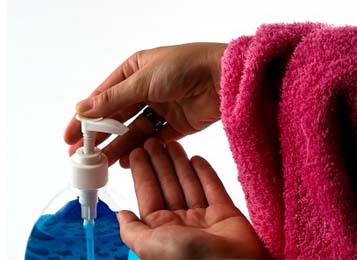Method’s 4 Rules for Staying Innovative
- By Chris Mittelstaedt
- Reading Time: 3 mins.
 Reprinted from Chris Mittelstaedt’s column Eureka on Inc.com
Reprinted from Chris Mittelstaedt’s column Eureka on Inc.com
Eric Ryan, co-founder of method home products, reveals the four things his company does to keep the creativity flowing.
At 36,000 feet, on a Virgin America flight, I was pondering soap. I already knew about method’s cleaning products as a consumer but after watching their co-branded pre-flight video “We’re All in this Together” and seeing the soap in the airplane lavatory, I began to wonder what this company has that others don’t.
Method makes cleaning products and yet somehow the consumer experience is about much more than cleaning. It’s about buying good design and environmentally friendly products—in fact, it’s a lifestyle choice. Making cleaning products cool? Now that takes some creativity.
“Great innovation is a cocktail of artist and operator,” method co-founder Eric Ryan told me recently at his office in San Francisco. “It’s imagination plus execution.”
Get tips for your office
Be an office hero!
I wanted to know more. Below Ryan shares with me his four key rules for keeping method innovative:
1. Build it into the culture. It starts with the hiring process. During interviews, managers ask all candidates three key questions: The first two questions usually focus on job-specific strategic and tactical issues. But the third is almost the most important: “How will you help keep Method weird?”
“We look for people who have a high aptitude for collaboration,” Ryan says. “Our question about keeping Method weird is really key to us because it shows how someone will bring passion and personality to their work every day.”
When it comes to working together and solving problems, Ryan says the company borrows a fundamental approach from an unlikely business source: improv theater.
“It’s the idea of saying ‘Yes, and…,’ rather than ‘Yes, but,'” he says. “It may sound like a subtle difference in the way people approach problems, but we find that it inspires creativity and lets people take risks.” The company even offers employees improv classes that go in-depth on things like stance, breathing, and mindset—small performative details that help improve creative thinking on the fly.
2. Value and inspire creativity. One of the simplest things the company does is an employee-of-the-month award, which is announced at one of the weekly Monday Morning Huddle meetings. The winner—selected for his or her contributions to method’s values, innovation, or culture—dons a cape and crown and gets photographed holding the Mug of Magnificence. Method also assigns a different person each week the role of running the meeting. Ryan says this allows employees to see their work through others’ eyes constantly.
Many companies say that they value creativity but method has found a way to institutionalize its importance. Ryan and his co-founder Adam Lowry make sure each team—whether it’s the high-level leadership team or the associate team—is made up of both “artists” and “operators.”
3. Use the office environment to reinforce your values. Ryan and Lowry work hard to keep method weird, creative, and humble. For example, they try to give employees a different perspective on the business by requiring them all to serve as the lobby receptionist one day each month. It’s a worldview shift and allows them to interact with customers, visitors, and other employees they might not see otherwise. The day I visited method’s headquarters, the receptionist was “product czar” Don Frey.
The office space also encourages creativity and weirdness. There is a ping pong room covered in AstroTurf. Hallways have idea-laden whiteboards running floor to ceiling. I could have sworn we were in the product development department at one point, but Eric corrected me. “Nope, this is finance. But that’s how we want it. Design is everywhere.”
4. Live in a constant state of make. If training in improv, partnering different personality types, and creative office space is the groundwork of method’s innovation strategy, successful implementation comes from mixing these elements with a mantra: “Live in a constant state of make.” Ryan is passionate about creating something instead of just talking about it. “We want to try and make a concept tangible as quickly as possible for three main reasons: first, so that we can all confirm that we’re having the same conversation; second, so that the impossible starts to feel possible; and third, so that we can demonstrate and reinforce short innovation loops.”


